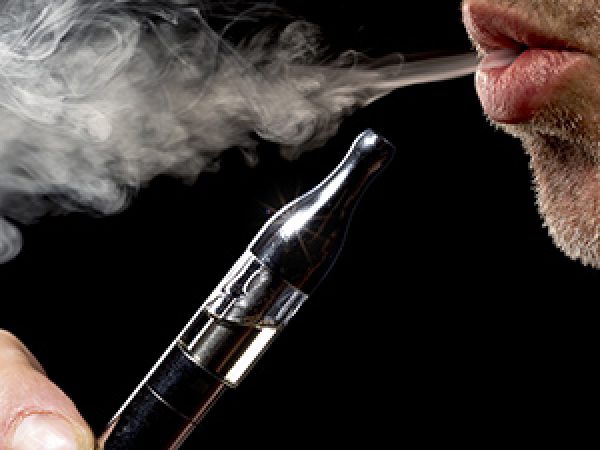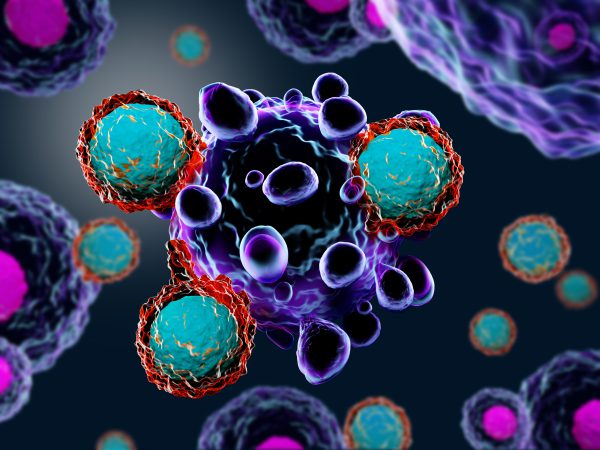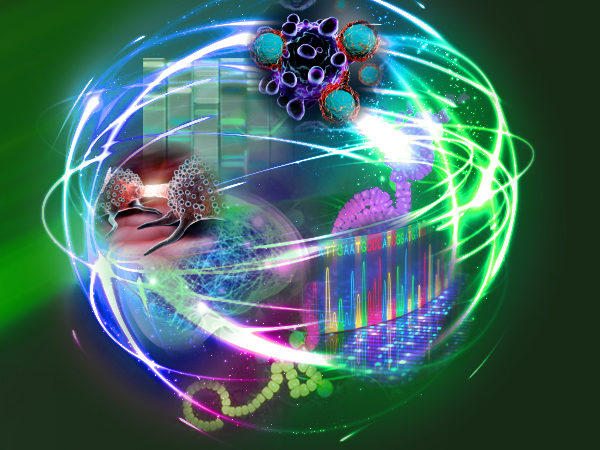Targeting Cancer in Indigenous Communities
Centuries ago, when several Native tribes in northeastern America were at constant war, a peacemaker came to stop the violence.
The peacemaker held up a single arrow and snapped it in front of tribal leaders. Then, he bundled five arrows together and showed the leaders that a bundle of arrows was impossible to break.
This “bundled arrow” philosophy became an integral part of the Haudenosaunee Confederacy’s culture, explained Rodney Haring, PhD, MSW, of the Roswell Park Comprehensive Cancer Center. Today, as indigenous communities grapple with an undue burden of cancer, the people and the health care professionals working with them should remember that philosophy, he said.
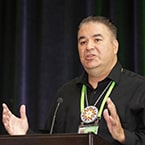
“The bundled arrow teaches us, collectively, the mindset of working together for the wellness of our people,” said Haring, a member of the Seneca Nation, during a plenary session at the 16th AACR Conference on the Science of Cancer Health Disparities in Racial/Ethnic Minorities and the Medically Underserved. The plenary session was led by Ronny A. Bell, PhD, MS, an enrolled member of the Lumbee tribe and a cochair of the conference.
Speakers at multiple sessions at this year’s Disparities conference represented several distinct indigenous groups, from the Northeast to the southwestern United States. As each took the stage, they introduced themselves in English, then in their tribal language.
The diversity among the speakers was a microcosm of the indigenous population in the United States, speakers said. While these groups have distinct languages, cultural traditions, and governments, there are also some similarities that could provide a solid foundation for improving public health.
Today, there are 5.2 million American Indians/Alaska Natives (AI/AN) in the United States, accounting for about 2% of the U.S. population. Indigenous communities are scattered around the United States, often far from high-quality health care, and burdened by high rates of poverty and substance abuse. These factors have contributed to worse outcomes from many types of cancer. As reported in the AACR Cancer Health Disparities Report 2022, the AI/AN population experiences higher incidence rates of lung, colorectal, and kidney cancers than whites. Cancers that are caused by infectious agents—such as liver, stomach, and cervical cancer—occur in high rates in indigenous populations. Furthermore, mortality rates from kidney and liver cancers are higher in the AI/AN populations compared with the white population.
Ending these disparities will require careful navigation of some persistent obstacles, speakers said. But a slowly growing number of cancer researchers from indigenous communities are uniquely positioned to take on the challenge.
A history of mistrust
America’s history of colonization of Native people created a culture of mistrust that persists today, speakers said. The establishment of the Indian Health Service in 1955 was intended as a framework for better health care services, but it cannot provide the same level of care as a comprehensive cancer center, speakers said.
Even assessing the burden of cancer in indigenous people is challenging, said Jeffrey Henderson, MPH, founder, president, and chief executive officer of the Black Hills Center for American Indian Health. He said that in recent decades, nearly half the U.S. indigenous population was misclassified.
“Surveillance efforts improved in the 1990s, but some of the initial efforts were only really capturing the healthiest among the Native population. That led to the misconception that cancer was not a significant problem among our people,” he said.
Collecting accurate data may be easier if health care professionals come from the tribal community, panelists said. They discussed innovative strategies such as hiring Native college students as research assistants, or encouraging comprehensive cancer centers to hire from nearby indigenous communities.
Embracing cultural sensitivity
As Priscilla R. Sanderson, PhD, pursued her doctorate, she faced some challenges from within her culture. She said her parents were eager for her to have a paying job, so she became a nursing aide while still a student. Then, some of her fellow Navajo Nation members worried that by studying cancer, Sanderson might get cancer herself.
“A tribal leader told me that I needed to go through a ceremony to be protected—so I did it,” she related.
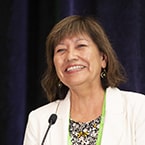
Today, as a principal investigator at Northern Arizona University’s Center for American Indian Resilience, Sanderson works with the Navajo community to assess cancer risk factors and promote preventive efforts. As she travels the Navajo Nation, which is about the size of West Virginia, she tries to practice outreach that honors the way she was raised—with a strong emphasis on community ties.
“It takes a while to build trust,” she said. “You should take the time to share a meal. Inquire about their family, ask how the elders are doing before you get into the business. Kinship is so important.”
Linda Burhansstipanov, MSPH, DrPh, a member of the Cherokee Nation and founder of the Native American Cancer Research Corporation, said cultural sensitivity is also necessary when experts try to encourage indigenous people to participate in clinical trials. She has led research that showed that outreach efforts that may work in some underserved communities, such as church programs or celebrity campaigns, tend not to work well with indigenous populations.
Instead, indigenous people may be motivated by a treasured leader agreeing to participate. Before her death in 2010, Wilma Mankiller, the first female principal chief of the Cherokee Nation, participated in oncology clinical trials and lent her voice and image to campaigns encouraging other Native Americans to do the same.
“Just because we’re a small population doesn’t mean we don’t need specialized treatment,” Burhansstipanov said. “American Indian/Alaska Natives pay taxes, we hold jobs. We share healing and traditional knowledge. We have respect for elders, for Mother Earth, for animals … We deserve to be alive and to live with higher quality than we do right now.”
Byron Clarke, of the Utah Navajo Health System Inc., agreed, saying that weaving traditional beliefs and modern medicine together is feasible.
“For many in our community, cancer is perceived as incurable and an eventual death,” he said. “Education and optimism can change that. Delivery and explanation is key.”

